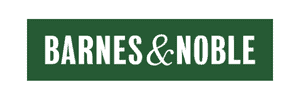PHILIPS
Philips’ blue ocean strategic move in the teakettle industry is an example of looking across complementary product and service offerings, path four in the six paths framework.
Despite its importance to British culture, the British teakettle industry had flat sales and shrinking profit margins until Philips Electronics, the Dutch consumer electronics company, came along with a teakettle that turned the red ocean blue.
By thinking in terms of complementary products and services, Philips saw that the biggest issue the British had in brewing tea was not in the kettle itself but in the complementary product of water, which had to be boiled in the kettle. The issue was the limescale found in tap water. The limescale accumulated in kettles as the water was boiled, and later found its way into the freshly brewed tea. The phlegmatic British typically took a teaspoon and went fishing to capture the off-putting limescale before drinking home-brewed tea. To the kettle industry, the water issue was not its problem. It was the problem of another industry—the public water supply.
By thinking in terms of solving the major pain points in customers’ total solution, Philips saw the water problem as its opportunity. The result: Philips created a kettle with a mouth filter that effectively captured the limescale as the water was poured. Limescale would never again be found swimming in British home-brewed tea. The industry was kick-started on a strong growth trajectory as people began replacing their old kettles with the new filtered kettles.
To reconstruct market boundaries and create new market space, think about applying path four of blue ocean strategy’s six paths framework. It drives you to look across complementary products and service offerings to discover ways to create a leap in value.
PHILIPS
Philips’ blue ocean strategic move in the teakettle industry is an example of looking across complementary product and service offerings, path four in the six paths framework.
Despite its importance to British culture, the British teakettle industry had flat sales and shrinking profit margins until Philips Electronics, the Dutch consumer electronics company, came along with a teakettle that turned the red ocean blue.
By thinking in terms of complementary products and services, Philips saw that the biggest issue the British had in brewing tea was not in the kettle itself but in the complementary product of water, which had to be boiled in the kettle. The issue was the limescale found in tap water. The limescale accumulated in kettles as the water was boiled, and later found its way into the freshly brewed tea. The phlegmatic British typically took a teaspoon and went fishing to capture the off-putting limescale before drinking home-brewed tea. To the kettle industry, the water issue was not its problem. It was the problem of another industry—the public water supply.
By thinking in terms of solving the major pain points in customers’ total solution, Philips saw the water problem as its opportunity. The result: Philips created a kettle with a mouth filter that effectively captured the limescale as the water was poured. Limescale would never again be found swimming in British home-brewed tea. The industry was kick-started on a strong growth trajectory as people began replacing their old kettles with the new filtered kettles.
To reconstruct market boundaries and create new market space, think about applying path four of blue ocean strategy’s six paths framework. It drives you to look across complementary products and service offerings to discover ways to create a leap in value.
THE BLUE OCEAN STRATEGY PRACTITIONER PROGRAM

Transform your strategic perspective, master blue ocean tools and frameworks, & learn to unlock new growth opportunities
Get started with new market creation with our live, interactive, expert-led program.


















